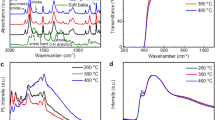Abstract
The work employs the finite element method (FEM) to model the touch on the flexible ultra-thin touch sensor panel for analyzing touch characteristics and signals. Touch sensor panel readout circuits typically depend on touch signals to determine whether the touch sensor panel is touched or not. However, the ultra-thin touch sensor panel encountered a problem which cannot correctly recognize touch points on this type of touch sensor panel (TSP) on active-matrix organic light emitting diodes (AMOLED) displays since its electrical characteristics are different from the one of the conventional TSP. The modeling techniques for the flexible ultra-thin touch sensor panel on an AMOLED display is used to analyze touch signals from the influence of the thickness of top over layer of the flexible ultra-thin TSP and to observe the variations of mutual capacitance from touch on the flexible ultra-thin TSP. When the flexible ultra-thin touch sensor panel with the thickness of the top over layer less than the threshold thickness of the top over layer is on multi-touch, the phenomenon of the ghost points are generated. The simulation to find the threshold thickness of the top over layer based on the FEM model is conducted, and the simulation results show the top layer thickness should be larger than 107 µm to eliminate the ghost points. Furthermore, a new solution that is an optimization of the electrode pattern of transmitters and receivers in the ultra-thin touch sensor panel to further minimize the threshold thickness of the top over layer of TSP without changing the physical structure of TSP is proposed. The results conducted by using this proposed solution show that TSP top over layer threshold thickness can be reduced to 65 µm without appearance of the ghost points.












Similar content being viewed by others
References
Abileah A, Boer W et al (2004) Integrated optical touch panel in a 14.1 AMLCD. SID Symp Dig Tech Pap 35(1):1544–1547
Baharav I, Kakarala R (2011) Capacitive touch sensing: signal and image processing algorithms. IS&T/SPIE electronic imaging. International Society for Optics and Photonics, pp 78730H–78730H-12
Barrett G, Omote R (2010) Projected-capacitive touch technology. Inf Disp 26(3):16–21
Camacho O, Viramontes E (2011) Designing touch sensing electrodes electrical considerations and recommended layout patterns. http://cache.freescale.com/files/sensors/doc/app_note/AN3863.pdf
Dieulesaint E, Royer D, Legras O, Chaabi A (1991) Acoustic plate mode touch screen. Electron Lett 27(1):49–51
Downs R (2005) Using resistive touch screens for human/machine interface. Analog Appl J Texas Instrum 3Q:5–9. http://www.ti.com/lit/an/slyt209a/slyt209a.pdf
Fortunato E, Barquinha P, Martins R (2012) Oxide semiconductor thin-film transistors: a review of recent advances. Adv Mater 24(22):2945–2986
Hecht DS, Thomas D, Hu L, Ladous C, Lam T, Park Y, Irvin G, Drzaic P (2009) Carbon-nanotube film on plastic as transparent electrode for resistive touch screens. J SID 17(11):941–946
Hung NX, Han HR, Liao WT, Hung CH, Wang WC, Shiau MS, Cheng CH, Wu HC, Hsu HS, Liu JJ, Liao SS, Sun RC, Lu GB, Liu DG (2013) Integrated amorphous-Si TFT circuit for gate driver on LCD panels. IEEE 10th international conference on ASIC (ASICON), pp 1–4
Lee J, Cole MT, Lai JCS, Nathan A (2014) An analysis of electrode patterns in capacitive touch screen panels. J Display Technol 10(5):362–366
Martin SJ, Verschoor GLB, Webster MA, Walker AB (2002) The internal electric field distribution in bilayer organic light emitting diodes. Org Electron 3(3–4):129–141
Park Y-S, Chung B-Y, Kang C-K, Park S-I, Im K-J, Jeong JH, Kim B-H, Kim SS (2011) Oxide TFT scan driver with dynamic threshold voltage control. SID Symp Dig Tech Pap 42(1):718–721
Song E, Kang B, Han I, Oh K, Kim B, Nam H (2015) Depletion mode oxide TFT shift register for variable frame rate AMOLED display. IEEE Electron Device Lett 36(3):247–294
Tai Y-H, Chiu H-L, Chou L-S (2013) Large-area capacitive active touch panel using the method of pulse overlapping detection. J Disp Technol 9(3):170–175
Acknowledgements
The authors appreciate the supports from National Chip Implementation Center and Ministry of Science and Technology of Taiwan, R.O.C. under the Grant Nos. MOST 104-2923-M-009-002-, 104-2119-M-492-001-, 105-2923-M-009-006- and 105-2623- E-009-009-D, and it was also supported in part by the Novel Bioengineering and Technological Approaches to Solve Two Major Health Problems in Taiwan sponsored by the Taiwan Ministry of Science and Technology Academic Excellence Program under Grant Number: MOST 105-2633-B-009-003.
Author information
Authors and Affiliations
Corresponding author
Rights and permissions
About this article
Cite this article
Chou, KY., Chao, P.CP., Chen, CX. et al. Modeling and analysis of touch on flexible ultra-thin touch sensor panels for AMOLED displays employing finite element methods. Microsyst Technol 23, 5211–5220 (2017). https://doi.org/10.1007/s00542-016-3241-4
Received:
Accepted:
Published:
Issue Date:
DOI: https://doi.org/10.1007/s00542-016-3241-4




